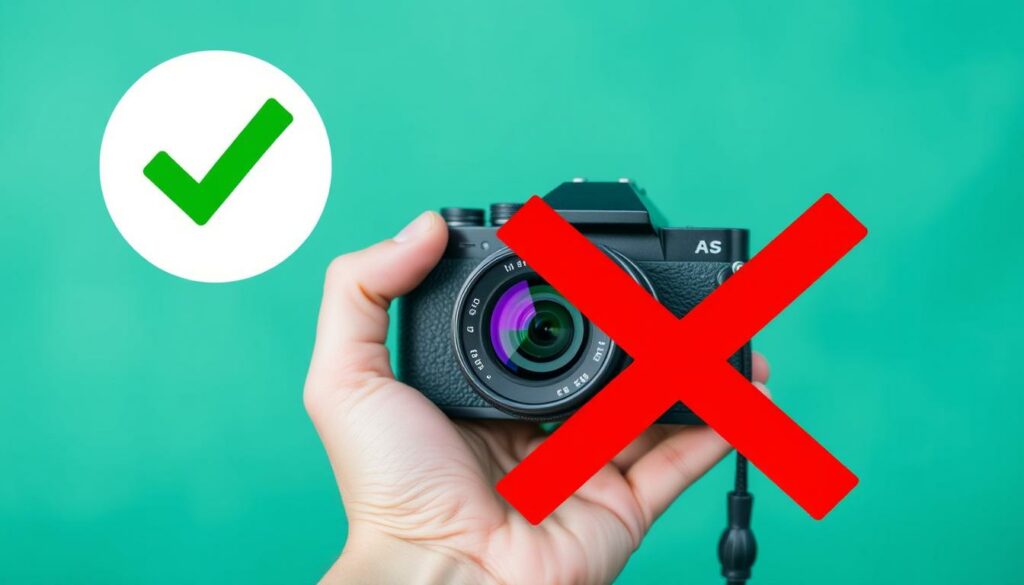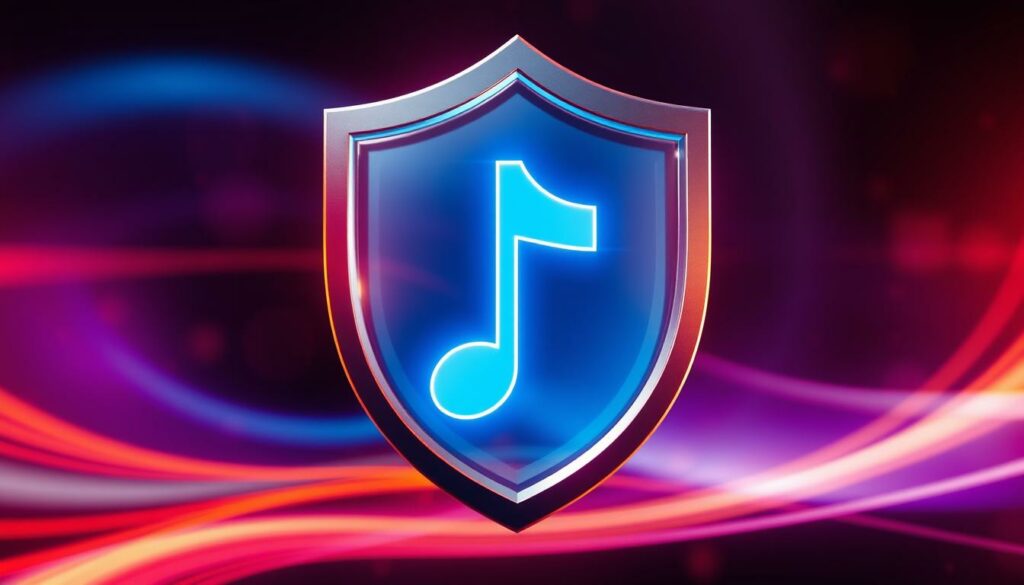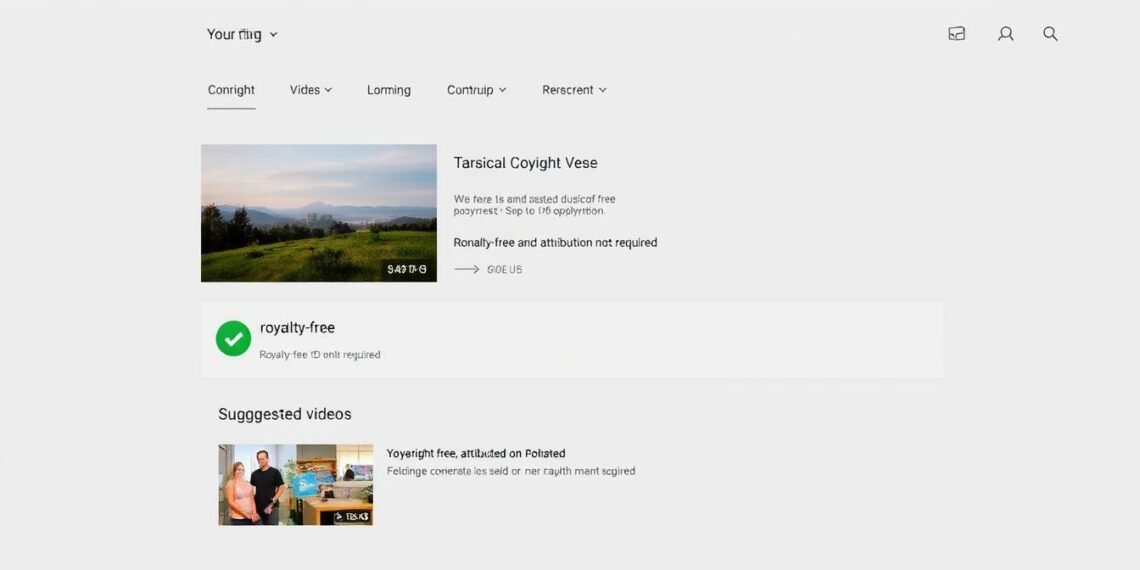Did you know over 90% of YouTube videos get checked for copyright issues? As a creator, it’s key to know how to follow YouTube’s copyright rules. If you don’t, you could face big problems like losing your monetization, having your content muted, or even having it taken down. It’s important to understand these rules to protect your work and make sure it gets seen.
This guide will give you the tools and tips you need to avoid copyright issues on YouTube. We’ll cover everything from user-generated content policies to using royalty-free music. By knowing the rules about the work’s nature, how much you use, and its market impact, you can make content that’s okay to share. Plus, learn about fair use exceptions that let you make critiques, parodies, and comments without breaking copyright.
Key Takeaways
- Understand YouTube’s copyright policies to prevent infringement.
- Failure to comply can lead to demonetization and channel removal.
- Royalty-free music is a popular choice for avoiding copyright claims.
- Use YouTube’s Content ID tool to protect your original work.
- Familiarize yourself with fair use laws to educate your content usage.
- Obtaining permissions and licenses is key to sustainable content creation.
Understanding YouTube Copyright Rules
It’s key to know YouTube’s copyright rules if you want to make content there. You must not use someone else’s copyrighted stuff without permission. Doing so is called copyright infringement and can cause big problems, like losing money and getting fewer views.
What constitutes copyright infringement on YouTube?
Using copyrighted stuff without permission is copyright infringement on YouTube. This means using music, movies, or art without the right to do so. Remember, breaking these rules can lead to your videos being muted, blocked, or even taken down.
Why YouTube cares about copyright
YouTube looks after the rights of creators. It has strict copyright rules to keep the platform healthy and original. If it doesn’t, creators might lose trust, and the platform could suffer. YouTube uses its Content ID system to check for copyrighted stuff, showing it’s serious about protecting rights.
Types of copyright-protected content
There are many things on YouTube that are protected by copyright, such as:
- Audiovisual works like films and videos
- Songs and musical compositions
- Written materials, such as scripts and books
- Visual arts, including paintings and photographs
Knowing about these can help you follow fair use rules and make legal content. You can find your niche and follow the law by learning more at this link.
How to avoid copyright claims on YouTube videos
Creating content for YouTube is exciting but tricky because of copyright laws. It’s key to know how to avoid copyright claims to make great content. By following some simple rules, you can lower your risk of copyright issues and still connect with your viewers.
Do your research before using content
Before adding outside content to your videos, learn about copyright laws. Get to know the fair use guidelines that say when and how you can use copyrighted stuff legally. Even small clips of music can lead to copyright claims. Most ways to get around copyrighted music don’t really protect you from claims. Make sure the content you use doesn’t break others’ rights, or you could face big problems.
The importance of obtaining permissions
Getting permissions from the original creators helps avoid copyright claims. This means talking to artists or record labels before using their work in your videos. If you get copyright claims, responding quickly can help protect you from losing your content or facing legal trouble. Even though fair use lets you use copyrighted stuff under certain conditions, it’s best to get permissions to avoid legal issues and follow the law.
Utilizing copyright-free content
Using content that doesn’t have copyright issues is a great way to avoid problems. YouTube’s Audio Library has over 150,000 free tracks you can use. Sites like Uppbeat also offer copyright-free music that you can credit. Using this kind of content makes your videos more engaging and helps you follow the rules to avoid copyright claims.

By using these tips, you can lower the chance of copyright claims on your YouTube videos. This lets you focus on making content that your audience will love. For more tips on dealing with YouTube’s changes, check out this resource on YouTube algorithm updates.
Leveraging Creative Commons Licenses
For content creators, knowing about Creative Commons licenses is a big plus. These licenses let you use, remix, and share content legally. You also give credit to the original creators. There are different Creative Commons licenses, each with its own rules. This helps you use Creative Commons to make your YouTube videos better.
Understanding Creative Commons licenses
Creative Commons licenses help share creative works while protecting the rights of the creators. They have rules on how others can use the content. This can be for personal, educational, or commercial use. It’s important for video creators to know these rules to avoid copyright problems.
How to find Creative Commons content
Finding Creative Commons content is key to making your videos better. There are great platforms that make it easy to find this type of media. Flickr is great for images, and Free Music Archive is perfect for audio. Using these sites helps you make legal content and boosts your creativity. For more tips on using Creative Commons with your videos, check out this resource.
Using Royalty-Free Music in Your Videos
Adding music to your videos can make them more engaging. Royalty-free music is a great choice because you don’t have to worry about copyright issues. It’s flexible and cost-effective for making content.
What is royalty-free music?
Royalty-free music means you can use the tracks without paying royalties every time. You might pay a one-time fee or get a license. It’s perfect for YouTube videos because it avoids copyright claims.
Best platforms for finding royalty-free music
Finding the right platform is key for great royalty-free music. Here are some top choices:
| Platform | Features | Subscription Cost |
|---|---|---|
| Thematic | Great selection, tailored for YouTube | Free, with options for upgrades |
| Track Club | Variety of genres and moods | Starting at $12/month |
| AudioJungle | One-time licensing fees per track | Varies by track |
| Artlist | Unlimited downloads, yearly subscription | Starting at $199/year |
How to properly attribute music copyright
It’s important to know how to give credit for royalty-free music. You should mention the artist, track title, and source link in your video description. Not doing this can cause confusion about who owns the copyright, even if the music is licensed.

Understanding YouTube's Content ID System
The YouTube Content ID system was launched in 2007 to protect copyrights on the platform. It automatically checks uploaded videos against a big database of copyrighted material. This system can spot sound recordings, compositions, and different types of videos to catch unauthorized use quickly.
With over 1.5 billion claims every year, it’s key to know how this system works for anyone making content.
How the Content ID system works
When you upload a video, the Content ID system looks for registered copyrights in it. If it finds a match, a copyright claim is made. The copyright owner can then choose to block the video, make money from it with ads, or just watch its performance.
In the first half of 2022, a big 90% of rightsholders chose to make money from videos with their content instead of blocking them.
What happens when your video receives a claim?
If your video gets a copyright claim, you need to think about what to do next. You can dispute the claim if you think it was a mistake, change your content, or let the claim go through. Knowing what happens with claims is important.
The copyright holder has up to 30 days to reply to disputes, which could delay your video’s visibility. By making original content or using approved material, you can handle the Content ID system well.
FAQ
How can I avoid copyright claims on my YouTube videos?
To avoid copyright claims, do your homework on copyright laws. Always get permissions from the original creators. Use content that’s free from copyright from trusted sources.
What is copyright infringement on YouTube?
Copyright infringement means using someone else’s work without permission. This can lead to strikes on your account. These strikes can stop you from making money and make your videos less visible.
Why does YouTube prioritize copyright protection?
YouTube cares about copyright to protect creators and keep the platform honest. Not enforcing copyright can lead to legal trouble for YouTube.
What types of content are protected by copyright?
Many types of content have copyright protection. This includes videos, songs, written works, and art. Knowing this helps you handle copyright issues better.
What resources can I use to find copyright-free content?
For copyright-free images and videos, check out Pixabay, Unsplash, and Pexels. For music, look at various music libraries designed for creators.
What are Creative Commons licenses?
Creative Commons licenses let creators share and tweak their work under certain rules. They help you use content legally and give credit to the original creators.
How can I find Creative Commons content for my videos?
To find Creative Commons content, use search engines like Flickr and Wikimedia Commons. Also, Creative Commons has a search portal where you can filter by license type for usable materials.
What is royalty-free music, and how does it work?
Royalty-free music means you don’t pay royalties for each use. It usually requires a one-time fee or is free on certain platforms.
Where can I find the best royalty-free music for my videos?
For top royalty-free music, try Artlist, Epidemic Sound, or YouTube’s Audio Library. These offer a variety of tracks to enhance your videos.
How do I properly attribute music that I use?
To credit music, include the artist’s name, song title, and a link to the original work in your video description. This follows the music’s licensing rules.
How does YouTube’s Content ID system work?
YouTube’s Content ID system checks videos for copyrighted content. If it finds a match, the copyright owner can block, monetize, or track the video.
What happens if my video receives a copyright claim?
If a copyright claim hits your video, it might get blocked, monetized, or tracked. Knowing these outcomes helps you deal with claims better.




